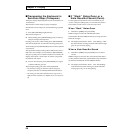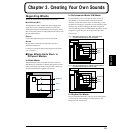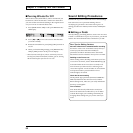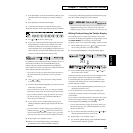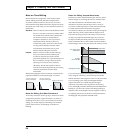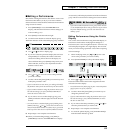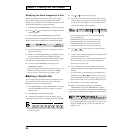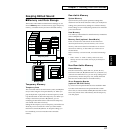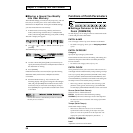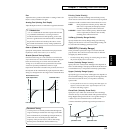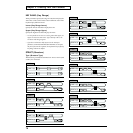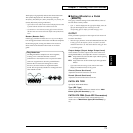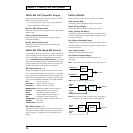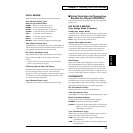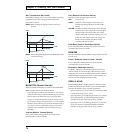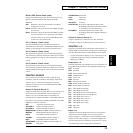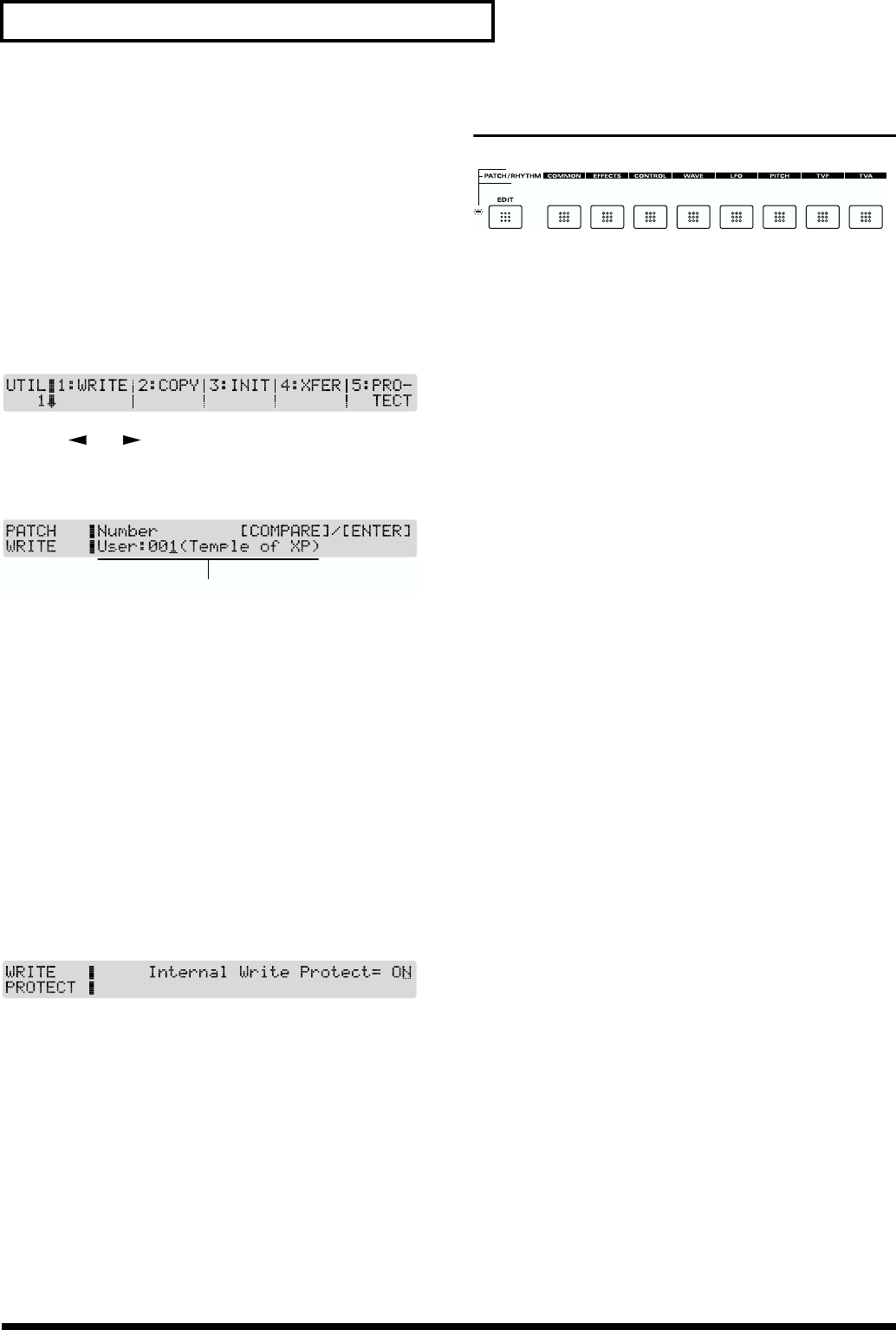
68
Chapter 3. Creating Your Own Sounds
■ Storing a Sound You Modify
into User Memory
The modified settings you make are only temporary, and will
be lost if you turn the power off or select another Patch,
Performance or Rhythm Set. To keep the modified settings,
you must write them into user memory.
1. In Patch mode (when storing a Patch), Performance
mode (when storing a Performance) or in Rhythm Set
mode (when storing a Rhythm Set), press [UTIL/CARD].
The UTIL 1 display will appear.
fig.3-20
2. Use [ ] or [ ] to make “1: WRITE” blink. Then press
[ENTER].
The WRITE display will appear.
fig.3-21.e
3. Use the VALUE dial, [INC]/[DEC] or numeric keys to
specify the Patch, Performance or Rhythm Set number of
the destination of writing.
4. Press [ENTER].
If Internal Write Protect is turned off, the specified writing
destination Patch, Performance or Rhythm Set will be
overwritten.
5. If Internal Write Protect (p. 121) is turned on, the
following display will appear. Change the ON setting to
OFF, and press [ENTER]. Internal Write Protect will be
turned off, and you will return to the display of step 2.
Press [ENTER] once again and the selected Patch will be
overwritten.
fig.3-22
* Internal Write Protect is automatically turned ON when the
XP-30’s power is turned on.
Functions of Patch Parameters
fig.3-05
■ Settings Common to the Entire
Patch (COMMON)
On this display you can assign a name to a Patch and set the
volume and pan of the entire Patch.
PATCH NAME
You can assign a name of up to 12 characters to the Patch.
* For details on assigning names, refer to “Assigning a Name”
(p. 46).
PATCH CATEGORY
Category
Specify the type (category) of the Patch.
The Patch Search function uses this setting. This setting also
determines the phrase that will be sounded by the Phrase
Preview function.
* For details on the category names, refer to p. 49.
PATCH CLOCK
Some parameters allow you to set a time value in terms of a
note length which is determined by a tempo setting or tempo
source you specify; Rate parameters (PATCH/ LFO/ LFO1,
2), Time parameter (PATCH/WAVE/TONE DELAY), and
some Multi-Effects parameters. This Patch Clock setting sets
the tempo which can be used by these parameters.
* When using a Patch in Performance mode, the setting of this
parameter will be ignored, and the setting of the PERFORM
CLOCK display (PERFORM/COMMON) will be used instead.
Source (Patch Clock Source)
Select the source of the Patch Clock.
PATCH: Synchronize to the Patch Tempo setting.
SYSTEM: Synchronize to the tempo clock of the sequencer.
* The Patch Clock does not transmit clock messages from MIDI
OUT connector.
Tempo (Patch Tempo)
Set the Patch Tempo setting.
* When Source (Patch Clock Source) is set to SYSTEM,
synchronization will be according to the tempo clock of the
system, so it will not be possible to set the tempo value. The
tempo of the system will be displayed in parentheses ( ).
PATCH COMMON
Level
Adjust the volume level of the Patch.
Writing destination



